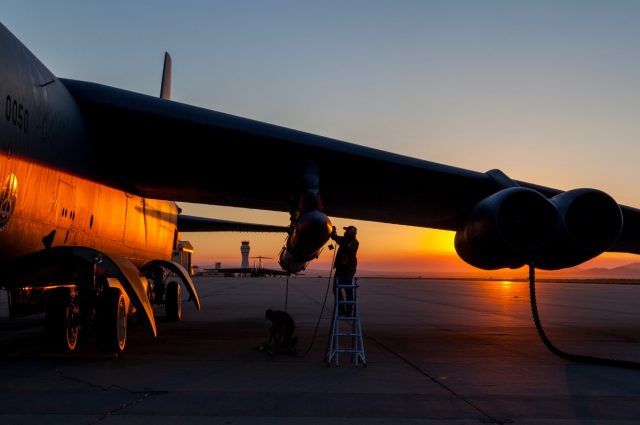
The US Air Force is preparing to carry out the first flight test of the AGM-183A air-launched rapid response weapon, dubbed ARRW, Air Force Brig. Gen. Heath A. Collins, program executive officer for weapons and director of the armament directorate at the Air Force Life Cycle Management Center in the Air Force Materiel Command has revealed.
The ARRW program is a boost-glide based hypersonic weapon, and is proceeding to flight tests after completing several captive carry trials.
Collins said his team is getting ready for the first booster flight test next week. “We’re also getting ready to transition into production within about a year on that program, so it will be the first air-launch hypersonic weapon that the Air Force has.
The first booster flight test is taking place after a slight delay, as the service had expected to fly the ARRW last year. The booster test flight will occur at Point Mugu Sea Range off California.
The air force revealed the plans as part of an article on hypersonics development strategy, under which it plans to deliver hypersonic strike capability to the warfighter in the early-mid 2020s.
Hypersonic systems are able to travel on extended flights within the upper atmosphere — 80,000 to 200,000 feet — at speeds near and above Mach 5, and they’re able to maneuver in ways that are hard for defenders to predict.
The high-altitude range creates a gap between air defenses and ballistic missile defenses, Mike White, principal director for hypersonics in the office of the undersecretary of defense for research and engineering, said.
White told attendees of the Air Force Association’s virtual Aerospace Warfare Symposium that to address these challenges, the department has developed a hypersonics modernization strategy that accelerates the development and delivery of transformational warfighting capabilities.
“We will deliver strike capability to the warfighter in the early-mid 2020s and a layered hypersonic defense capability — first terminal and then glide phase — in the mid-late 2020s. For reusable systems, our goal is to deliver capability in the early to mid-2030s,” White said.
James Weber, senior scientist for hypersonics at the Air Force Research Laboratory, said the lab has a long history in hypersonic science and technology development, beginning in the early 1960s.
Over the last 25 years, DOD has invested some $1.7 billion in hypersonics, he said.
“We have a wide technology portfolio for hypersonics with competencies in test capabilities and thermal propulsion — such as scramjet propulsion and solid rocket motors and liquid rockets, materials, high-temperature materials and structures, manufacturing, guidance control systems and also basic research,” Weber said, adding that AFRL works closely with other military services and agencies.
For instance, Weber said the research laboratory is partnering with the Defense Advanced Research Projects Agency on the hypersonic, air-breathing weapon concept program, as well as the tactical boost glider programs. “We are partnered with them to develop and demonstrate critical technologies for launch of hypersonic weapons by FY22.”


























